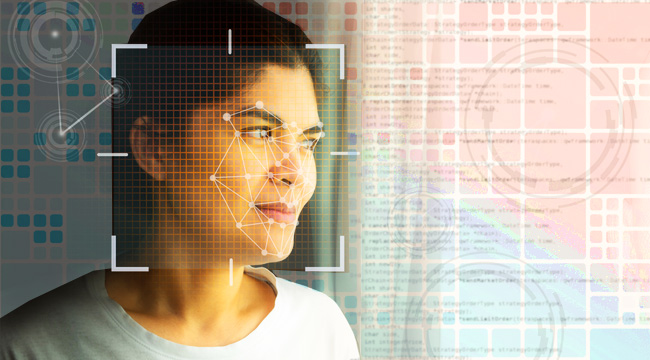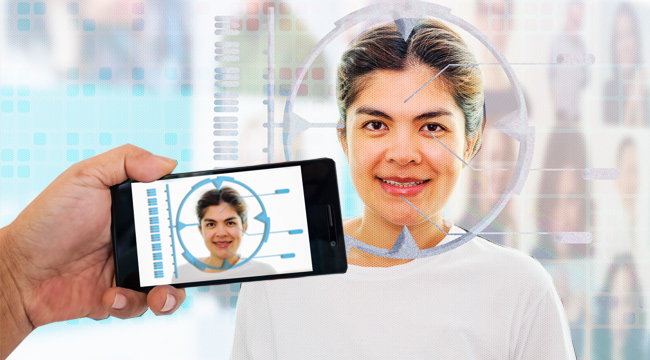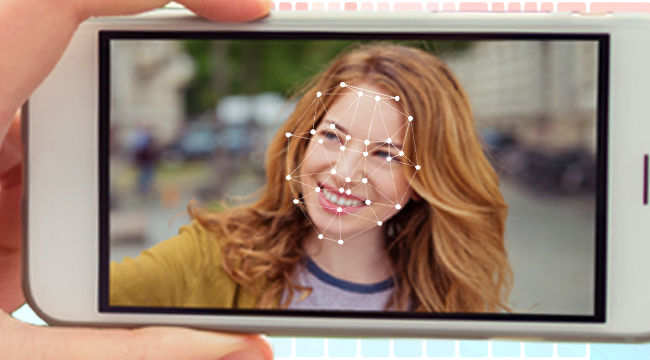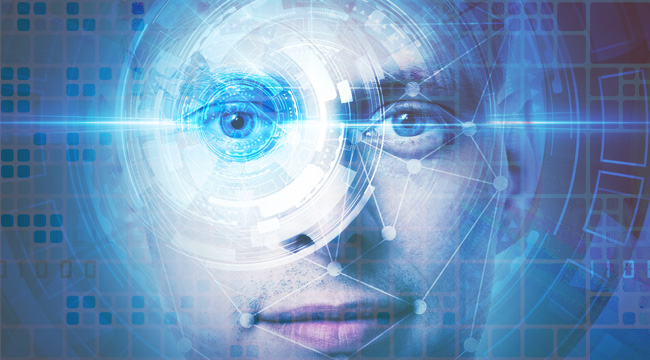
When’s the last time you couldn’t remember your online banking password? The flurry of emails, texts, and two-step verifications probably comes to mind. It’s a process so frustrating it can leave a person questioning the overall convenience of online banking. Not to mention that passwords themselves are becoming increasingly unreliable, whether you remember them or not.
That’s just the tip of the iceberg. Debit cards are proving more and more vulnerable. The (relatively) recent technology of fingerprint identification is undependable at best and laughably inept at worst. Not to mention that your information could simply be stolen thanks to widespread malware.
Obviously, the digital world isn’t going to dismantle itself while we revert back to an era of cash-and-carry, but there is one form of technology that’s standing out to as a solution: facial recognition. While the technology itself has been around for some time to varying degrees, it’s primary use has been with criminal databases. However, innovative thinking is showing that facial recognition software could be the defining safety net between us and a digital heist.
Leading The Revolution

Right now in China — where facial recognition software is fast becoming ubiquitous — you can transfer money, confirm the identity of your rideshare driver, or even use it as your ID when entering secure areas. It’s no accident that China has become ground zero for testing the software’s limitless possibilities. First, their attitude toward surveillance and security is much different than that in the United States. Second, the companies leading the advances in this technology are based in China. And as they look past the conventional applications, they’re are expanding their reach and helping to launch a new technological revolution.
One of the main companies behind facial recognition, Face++ (pronounced Face Plus Plus) was a meager startup just five years ago that now boasts more than $100 million in funding. Located in a suburb of Beijing, the Face++’s software is open-sourced, meaning anyone can download the most basic version for free. There are tiered versions also available for a price, which can be tailored to a company’s specific needs. Their big plans involve integrating their software into the financial sector, providing customers with more secure access to their funds.
Another company leading the way is Baidu, China’s most popular search engine. Right now, their facial recognition technology is currently being touted as more accurate at recognition than humans are. Their main focus involves working with the government of Wuhzen, a popular travel destination. Their goal: giving tourists a ticket-free experience that only requires their face for admission.
What Facial Recognition Can Do

While primarily focused on things like payment identification and more secure access to sensitive data, enhancing the customer experience is high on the list of how companies are trying to use facial recognition to fit their needs. For example, the software can be used to integrate with a store’s in-house cameras, which would recognize repeat or VIP customers. This provides an immediate advantage for a more customized service experience. Suddenly, employees wouldn’t need to be the ones who recognize you. The store itself could do that for them.
On the travel front, U.S. airports have just started to quietly implement facial recognition software in major airports across the country. Measures are already in place at Dulles outside of Washington D.C., as well as JFK airport in New York City. As airports in Canada and England are rolling out similar systems, plans to make it a mandatory part of the boarding process on every international flight are already underway.
It’s not just globetrotters that could see the integration into their daily lives. Soon, just traveling across town could involve the use of facial recognition. Uber recently partnered with Face++ to implement a feature, dubbed the “Real-Time ID Check.” It requires their drivers to periodically take selfies before accepting rides as a way to deter imposter drivers and help keep their customers safe.
The online superstore Alibaba first teased a “pay with your face” option back in 2015, with hopes of making it live sometime this year. Alibaba’s founder, Jack Ma, boasts the technology will get rid of all the headaches normally associated with online shopping, which he cited as (of course) passwords and security. Similarly, Android Pay has been test-driving facial recognition software, and the newest line of Samsung Galaxy phones have the tech built directly into their firmware.
Where To Go From Here

As facial recognition continues to make its way into our daily lives, there’s still some concern over the use of the tech itself and its impact. While everyone agrees that there’s a need for more digital security, the idea of trading privacy doesn’t sit well with everyone. And let’s face it (zing!), the idea of a computer being able to recognize you can seem inherently unsettling. Hell, it’s every dystopian sci-fi fever dream rolled into one convenient piece of software. But compare it to something like closed-circuit cameras, which have been in place for years. They were once deemed the incarnation of big brother, and have since faded into the background of our daily lives with minimal impact or inconvenience. Outside of the occasional traffic citation.
Philosophical disagreements aside, the reality is that the technology is quickly becoming commonplace across Europe and Asia. This means it’s all but inevitable that the same will happen stateside. One could even make the argument that, unless you’re a fugitive on the run or deliberately impersonating someone else, facial recognition can only make access to your digital life more secure. When it comes to the slippery slope of our right to anonymity, think about how that relates to the fact that most of us voluntarily leave a trail of digital breadcrumbs via social media.
Ultimately, facial recognition has been a long time coming and is proving to be one of the most diverse utilizations of technology today. There are countless ways it can be used to make our tech-heavy lives safe, with new uses being thought of and implemented all the time. While all technology will have its drawbacks and naysayers, the flexibility, convenience, and security offered up by the use of facial recognition technology will help bridge the gap between us and the lives that we increasingly live online.






